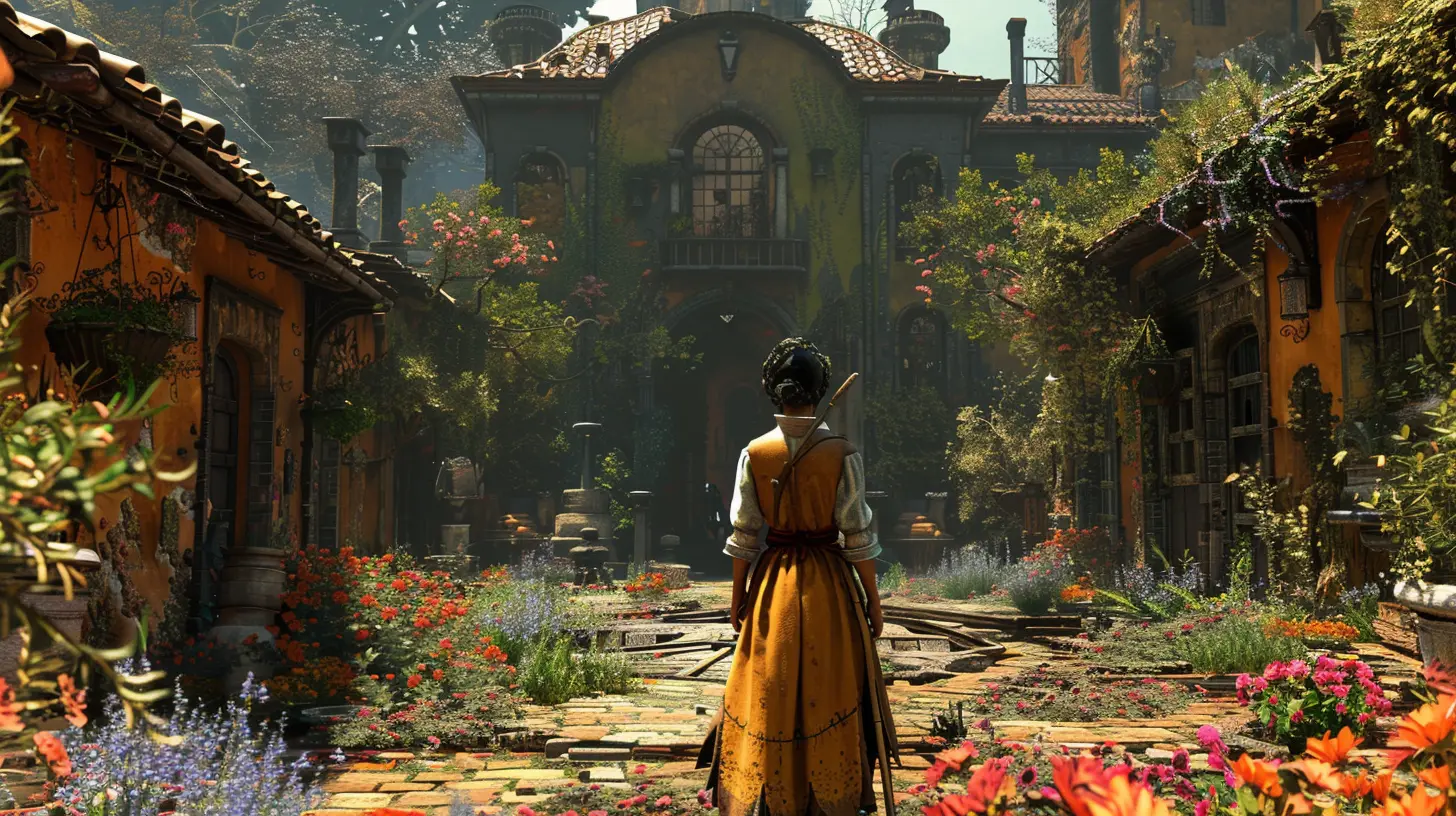The Evolution of Interactive Storytelling in Episodic Games
18 October 2025
Let’s take a journey back a couple of decades. Remember when video games were just about scoring high on Pac-Man or defeating the final boss in Super Mario? Pretty straightforward, right? But nowadays, they’re more than just pressing buttons or acing levels—they’re emotional roller coasters that can make you cry, laugh, or gasp at plot twists. That’s where interactive storytelling enters the chat.
Now mix that concept with episodic games—games released in bite-sized chunks, like your favorite Netflix series. This pairing has redefined how we experience narratives in gaming. But how did we get here? And what makes episodic games so special? Let’s dig in. 
What Is Interactive Storytelling in Gaming?
Interactive storytelling is like a "choose-your-own-adventure" book on steroids. In these games, players don’t just sit back and watch things unfold. Instead, they interact, make choices, and shape the narrative. The result? A story that feels personal—like it was written just for you.Think of it like being in the writer’s room of a TV series where you get to make the hard calls. Do you save the stranger or your best friend? Do you tell the truth or keep secrets buried? Your decisions can lead to wildly different outcomes, and that’s what keeps players glued to their screens. 
Episodic Games: A Quick Rundown
Episodic games take storytelling to another level by chopping the content into episodes, much like your favorite shows. Each episode feels like part of a larger puzzle, leaving you hanging just enough to want more.This format gives developers a unique edge. For one, it creates suspense. Don’t we all love a good cliffhanger? Two, it allows ongoing feedback—players’ reactions to an episode can influence the direction of the story in future releases. It’s almost like “real-time storytelling,” if you will. 
The Origins of Episodic Games
Okay, so who kickstarted this whole episodic storytelling craze in gaming? You might think it’s something modern, but the roots go way back.The Early Seeds
The concept of episodic structure isn’t super new—it borrows from serial storytelling in literature and TV. Think Charles Dickens publishing his novels chapter by chapter, or soap operas gripping audiences week after week. But games? They adopted this episodic model much later.Back in the 1980s and 1990s, there were inklings of episodic content. Some text-based adventure games like Zork laid the foundation for narrative-focused gameplay, even if the episodic format itself wasn’t fully realized.
The Real Game-Changer: Telltale Games
Enter the big player: Telltale Games. They made episodic storytelling cool again in the mid-2000s. Remember The Walking Dead series? Yeah, that was revolutionary. Telltale fused emotional choices with an episodic delivery, and it worked like a charm. Suddenly, players weren’t just waiting for the next level—they were waiting for the next episode.Telltale carved out a niche that few have managed to rival. Their success proved that compelling stories and episodic structures could hook gamers just as much as a killer multiplayer deathmatch. 
Why Episodic Games Work So Well
So, why are players drawn to episodic games like moths to a flame? Let’s break it down.1. Emotional Investment
Nobody likes to admit it, but we’re all suckers for drama. Episodic games excel at tugging at your heartstrings with relatable characters and morally complex choices. It’s like binge-watching Breaking Bad and feeling personally responsible for Walter White’s shady decisions.When you spend hours shaping a character’s journey, you feel invested. Did you make the right call? What happens next? That lingering curiosity makes the episodic model brilliant.
2. Cliffhangers Are Addictive
You know the drill: the episode ends on a dramatic note, and you’re left screaming, “NOOO!” It’s maddening, but it’s also genius. Developers keep you hooked and begging for the next installment.It’s like when a TV series ends a season with someone opening a mysterious letter, and you’ve got to wait a whole year to find out what’s inside. Painful, yet effective.
3. Low Barrier to Entry
Episodic games are typically easier on your wallet because you can buy one episode at a time rather than forking out $60 upfront. This model is perfect for gamers who want to “test the waters” before committing to the entire series.Plus, it’s less overwhelming. You can play through an episode in a couple of hours versus investing dozens of hours upfront. It’s like snacking instead of diving headfirst into a buffet.
The Players Who Shaped the Genre
Let’s shout out the developers who revolutionized episodic storytelling.1. Telltale Games
We’ve already sung their praises, but seriously, they deserve it. From The Wolf Among Us to Batman: The Telltale Series, they were the pioneers of blending emotional narratives with episodic formats.2. Dontnod Entertainment
Remember Life is Strange? Dontnod proved that episodic games could go even deeper into emotional storytelling. They tackled complex themes like mental health, family dynamics, and identity with a unique time-manipulation mechanic.3. Remedy Entertainment
With games like Alan Wake and Quantum Break, Remedy brought a cinematic vibe to episodic storytelling. Their episodes often blurred the lines between gaming and TV, giving players both gameplay and live-action content.Challenges of Episodic Gaming
Okay, it’s not all rainbows and unicorns. There are a few bumps in the road when it comes to episodic games.1. Long Wait Times
If you thought waiting for the next season of your favorite show was bad, try waiting months for the next episode of a game. The gaps between releases can kill momentum and frustrate fans.2. Risk of Cancellation
Here’s the harsh truth: not all episodic games make it to the finish line. Financial issues, poor sales, or development problems can leave a series hanging, unfinished forever. (Looking at you, Half-Life fans.)3. High Expectations
When an episode sets the bar high, there’s a lot of pressure for subsequent episodes to deliver. One misstep can sour the entire experience, leaving players feeling betrayed.The Future of Episodic Storytelling
So, where is episodic storytelling headed? Will it evolve? Will it fade away? The answer probably lies somewhere in the middle.With the rise of streaming platforms like Xbox Cloud Gaming and services like Game Pass, episodic games could become even more accessible. Imagine subscribing to a game and receiving episodes like you would with a streaming series.
On the other hand, there’s competition from binge-worthy games with full narratives released all at once. Let’s face it—people love immediate gratification.
But here’s the thing: episodic storytelling isn’t just about the format; it’s about the experience. As long as developers keep crafting emotionally resonant stories with meaningful choices, episodic games will continue to find their audience.
Why They Matter
Episodic games are more than just a genre—they’re a testament to how far the gaming industry has come. They bridge the gap between video games, TV, and even books, proving that gaming is an art form capable of making you feel something.And honestly? In a world where we’re constantly bombarded with shallow entertainment, episodic games remind us of the beauty of anticipation, of living with a story and letting it simmer in our minds before we return for more.
So next time you’re debating whether to play one, ask yourself: Are you ready to be a part of something bigger than just a game?
all images in this post were generated using AI tools
Category:
Interactive StorytellingAuthor:

Kaitlyn Pace
Discussion
rate this article
1 comments
Evangeline McWain
From pixelated choices to heart-wrenching cliffhangers, episodic games are like rollercoasters for your emotions—hold on tight!
October 25, 2025 at 2:59 PM

Kaitlyn Pace
Thank you! I love that analogy—episodic games truly take players on an emotional ride, blending engaging narratives with interactivity in ways that continue to evolve.


